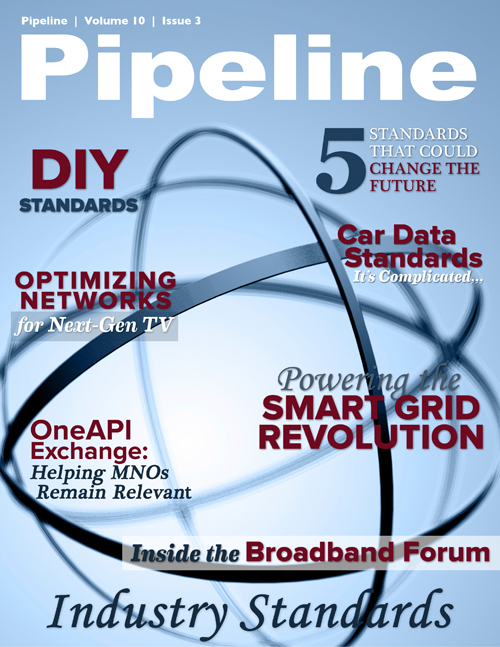Powering the Smart-Grid Revolution
With NDIM the smart-grid network master device is able to set its PLC network’s signals so that they’re different from those in the homes it encounters, thus eliminating internetwork interference. When G.hn is used as only one of the PLC networking technologies, either for utility AMI service or the in-home network, then G.cx can enable coexistence between G.hn and some other PLC technology, so long as the other technology supports the inter-system protocol, or ISP, the relevant protocol on which G.cx is based and a relatively new technology that may be adopted widely and deployed by multiple PLC products to reduce the internetwork interference between different PLC technologies.
G.hn has several other ways of reducing internetwork interference. G.hn devices have adaptive power control and transmit only at the minimum power level required to achieve the target data rate and quality of service (QoS) for each data connection. Bandwidth can be shared (through spatial reuse) or not using intelligent power management and NDIM, which saves energy, a critical requirement for any smart-grid device. (Please read the HomeGrid Forum white paper “PLC Neighboring Networks” for more information.)
On the subject of lower power consumption, G.hn provides a means for lengthy reduced power modes for its nodes at various operational levels while ensuring there is no loss of communication over the network to any device. For example, in an AMI environment, where meters may report only periodically—say, every 15 minutes—the G.hn transceiver at a meter can turn off its transmitter completely and drastically reduce most of its active internal processes while still maintaining a “receive” mode capable of detecting messages destined for the transceiver, cutting its energy consumption almost in half.Then, based on the time assignment the network master allocates on wire to transmit to each meter, each one’s transceiver knows when there will be no traffic coming its way, allowing it to shut off its “receive” function and drop its power consumption to the bare minimum. These functions are useful for in-home networks as well as distribution automation networks because they reduce operating expenses even as they maintain peak performance and throughput, an extremely green approach from an extremely advanced communications option.
Using state-of-the-art threat mitigation techniques, G.hn ensures that the security of network content and control stays secure regardless of neighboring/external threats, not to mention internal ones like the hacking of a smart meter. With cutting-edge AES-128 data encryption, G.hn’s point-to-point security provides another layer of protection by maintaining full confidentiality for all communication within the network, as the headend, when paired with each smart meter, uses a unique set of encryption keys per meter so that no other transceiver in the network can decode its messages.
Furthermore, G.hn PLC networks can rely on relay nodes to pass frames between two nodes that can’t communicate directly. For example, AMI messages transiting G.hn relay nodes remain encrypted while the relay nodes do not have the keys, and therefore are unable to decrypt the contents. In any smart-grid AMI network, G.hn point-to-point security is instrumental, as each meter and its communications must be secure from any threat, even ones at nearby hacked meters; a secure AMI network could pass signals into the home to reach a smart display without affecting local networking or exposing the AMI data to snooping.





















